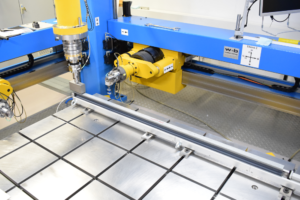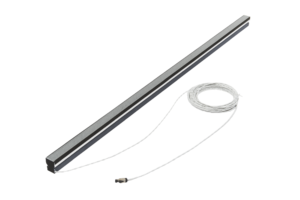Due to be presented to the public for the first time in April next year at the Intertraffic Amsterdam 2020 show in the Netherlands, Swiss measurement technology developer and supplier Kistler has unveiled its new KiTraffic Digital Weigh-In-Motion (WIM) system.
WIM technology is already being used for various purposes worldwide, including the protection bridges and roads or to collect data for statistical purposes. Sensors in the road surface record the weight of vehicles while they are in motion without impairing the flow of traffic. However, the technology has not so far been capable of capturing overloaded vehicles directly after weighing in the same way that speed control systems operate. In the vast majority of countries, ‘direct enforcement’ or the automated recording of vehicle data with subsequent notification of charges, requires vehicles to be weighed using certified, static scales.
 Road authorities also need to be able to rely on the measurement results if, for example, the road quality is sub-optimal or a vehicle drives diagonally across the sensor. At most measuring stations where fines are imposed for overloaded vehicles, WIM technology is therefore primarily used for pre-selection. Officers are then subsequently required to verify the measurement result with the aid of a static weighbridge and can only then order the driver to pay a fine.
Road authorities also need to be able to rely on the measurement results if, for example, the road quality is sub-optimal or a vehicle drives diagonally across the sensor. At most measuring stations where fines are imposed for overloaded vehicles, WIM technology is therefore primarily used for pre-selection. Officers are then subsequently required to verify the measurement result with the aid of a static weighbridge and can only then order the driver to pay a fine.
With KiTraffic Digital, Kistler says it has now succeeded in bringing a solution onto the market that significantly improves measurement accuracy and thus enables direct enforcement in accordance with legal requirements. The company states KiTraffic Digital is the most accurate WIM system yet available. The new system promises an accuracy of up to 2% of GVW (Gross Vehicle Weight) independent of almost all external factors, such as driving manoeuvres or road conditions. Through the technology, Kistler says it has created the conditions for highways agencies to be able to automatically impose fines for overloaded vehicles.
The entirely new Lineas sensor incorporates multiple quartz crystals that independently deliver data via a digital interface. The digital measuring signal permits individual calibration of each quartz crystal and prevents signal interference on the transmission path. Working from the measurement signals, sophisticated algorithms calculate the wheel, axle and total weight of each vehicle. Due to open standard interfaces, the system can be easily integrated into third-party traffic monitoring systems and back-office enforcement platforms.
The new digital system also enables other potential sources of error to be ignored. For example, the sensor delivers reliable results even when the vehicle being measured is about to overtake and is driving diagonally over the WIM sensor arrangement. At the same time, monitoring can be carried out on any number of lanes. The sensors also provide information on whether a vehicle is equipped with single or dual tires and can draw conclusions about the condition of the tires. The new system automatically records this information without the need for additional hardware, and Kistler notes that the new KiTraffic Digital system even eliminates the need for the previously necessary induction loops for vehicle detection.





